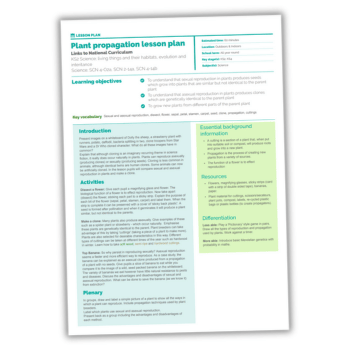This lesson helps KS2 children understand that asexual reproduction in plants produces clones which are genetically identical to the parent plant.
They’ll also learn that sexual reproduction in plants produces seeds, which then grow into plants that are similar, but not identical to, the parent plant.
Children will have a go at growing new plants from different parts of the parent plant.
Starter activity
Present images on a whiteboard of Dolly the sheep, a strawberry plant with runners, potato, daffodil, bacteria splitting in two, clone troopers from Star Wars and a Dr Who cloned character.
What do all these images have in common? Explain that although cloning is an imaginary recurring theme in science fiction, it really does occur naturally in plants.
Explain to KS2 that asexual reproduction in plants produces clones, while sexual reproduction produces seeds. Cloning is less common in animals, although identical twins are human clones.
Some animals can now be artificially cloned. In the lesson pupils will compare sexual and asexual reproduction in plants and make a clone.
The Royal Horticultural Society is a charity established to share the best in gardening. It aims to enrich everyone’s life through plants, and make the UK a greener and more beautiful place. Get more great resources from the RHS. Visit schoolgardening.rhs.org.uk/home. You can also follow on X at @The_RHS.











